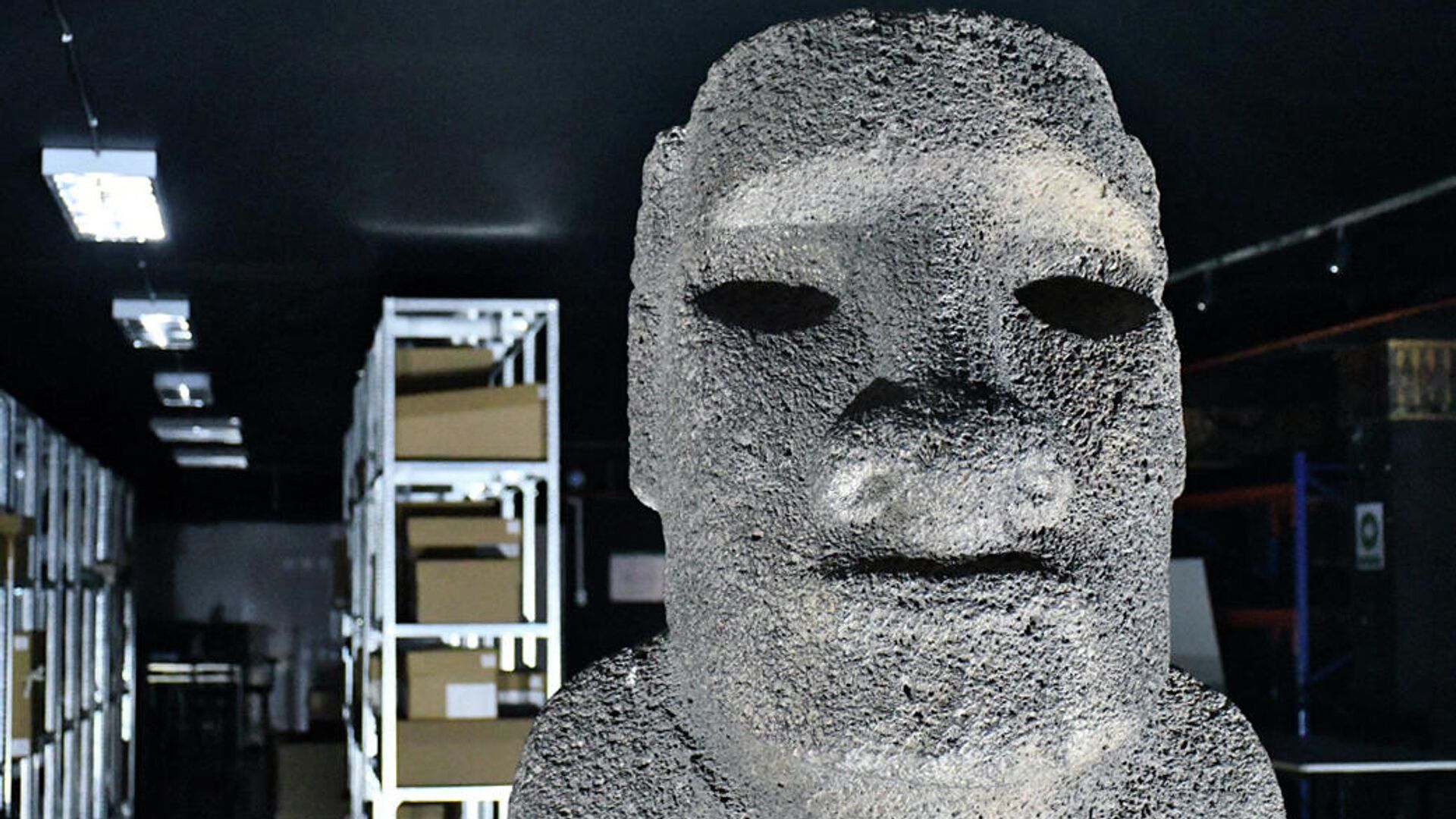https://sputnikglobe.com/20220222/long-road-back-home-chilean-museum-to-return-moai-monolith-to-easter-island-1093264247.html
Long Road Back Home: Chilean Museum to Return Moai Monolith to Easter Island
Long Road Back Home: Chilean Museum to Return Moai Monolith to Easter Island
Sputnik International
The so-called moai monoliths were created by Rapa Nui Polynesian people, who according to scientists, settled on the island between 800 and 1200 CE. They are said to have created industrious culture.
2022-02-22T10:50+0000
2022-02-22T10:50+0000
2022-10-19T20:16+0000
culture
easter island
chile
rapa nui
archaeology
https://cdn1.img.sputnikglobe.com/img/07e6/02/16/1093264119_0:42:1041:628_1920x0_80_0_0_693fb247783fbc4685a0d94e997752d0.jpg
Chile's National Museum of Natural History says it will return the oldest moai monolith to Easter Island. In a statement posted on its website, the museum said the enormous statue will be sent back under its repatriation programme, which aims to restore the cultural heritage assets of the island.The statue was first brought to Chile in 1870 and has been on display in the museum since 1878. The descendants of the Rapa Nui people, who created the sculptures, have for years called on the Chilean authorities to return the sculptures to their original homeland. Similar requests have been sent to the countries that took statues from the island in the 18th and 19th centuries.Chile's National Museum of Natural History said the basalt statue, which weighs 715 kgs, will depart from the port of Valparaiso next Monday. The museum has created a special concrete platform and package for its safe transportation. Upon returning to its homeland the sculpture will be exhibited in the Father Sebastian Englert Anthropological Museum.
easter island
chile
Sputnik International
feedback@sputniknews.com
+74956456601
MIA „Rossiya Segodnya“
2022
News
en_EN
Sputnik International
feedback@sputniknews.com
+74956456601
MIA „Rossiya Segodnya“
Sputnik International
feedback@sputniknews.com
+74956456601
MIA „Rossiya Segodnya“
chile’s national museum of natural history, moai tau, easter island, chile to return, created by rapa nui,
chile’s national museum of natural history, moai tau, easter island, chile to return, created by rapa nui,
Long Road Back Home: Chilean Museum to Return Moai Monolith to Easter Island
10:50 GMT 22.02.2022 (Updated: 20:16 GMT 19.10.2022) The so-called moai monoliths were created by the Rapa Nui, a Polynesian people, who according to scientists, settled on the island between 800 and 1200 CE. They are said to have created an industrious culture. The arrival of Europeans in the 18th century resulted in the decline of Rapa Nui society. Chile annexed the island in 1888.
Chile's National Museum of Natural History says it will return the oldest
moai monolith to Easter Island. In a statement posted on its website, the museum said the enormous statue will be sent back under its repatriation programme, which aims to restore the cultural heritage assets of the island.
"For the Rapa Nui people, the moai represent the spirit of their ancestors, holders of ancestral energy, and are considered the living incarnation of a person. For the Rapa Nui, their ancestors, funerary objects, and ceremonial materials can be as alive as the members of their communities", the museum said in a statement.
The statue was first brought to Chile in 1870 and has been on display in the museum since 1878. The descendants of the Rapa Nui people, who created the sculptures, have for years called on the Chilean authorities to return the sculptures to their original homeland. Similar requests have been sent to the countries that took statues from the island in the 18th and 19th centuries.
Chile's National Museum of Natural History said the basalt statue, which weighs 715 kgs, will depart from the port of Valparaiso next Monday. The museum has created a special concrete platform and package for its safe transportation. Upon returning to its homeland the sculpture will be exhibited in the Father Sebastian Englert Anthropological Museum.

